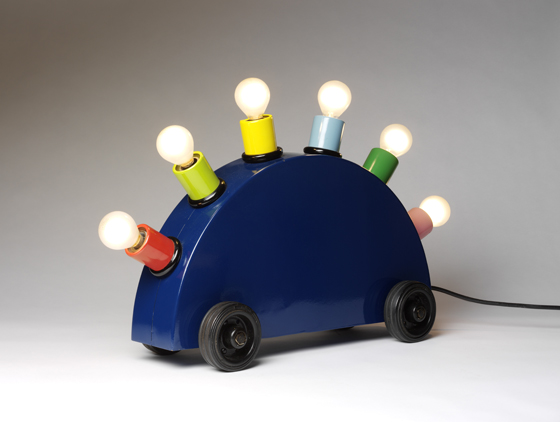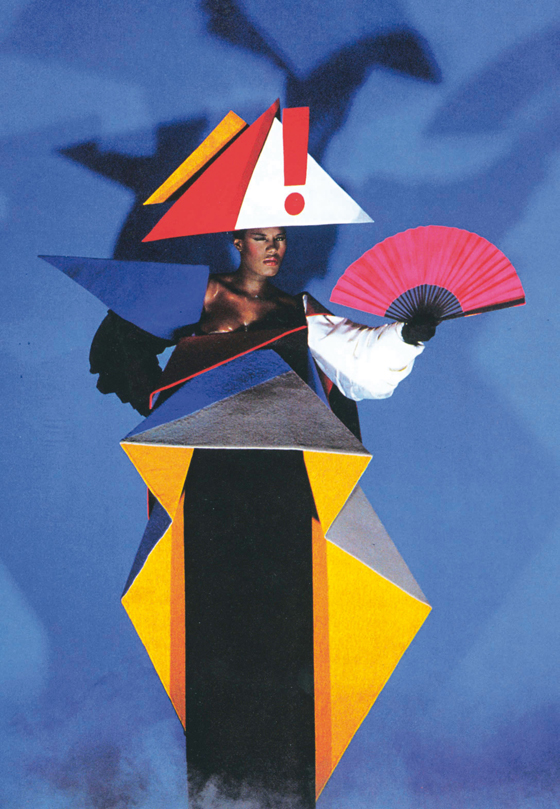So PoMo! – 'Postmodernism: Style and Subversion 1970–1990' at London's V&A Museum
Texte par Simon Keane-Cowell
Zürich, Suisse
23.09.11
It's forty years since the love-it-or-hate-it, style-driven phenomenon that was postmodernism first emerged in architectural practice, soon manifesting itself in design, art, fashion and music. The V&A's major new show, 'Postmodernism: Style and Subversion 1970–1990', examines its vibrant, playful forms and, sometimes contradictory, meaning.
London-based architects Carmody Groarke were charged with designing the exhibition, which successfully reflects postmodernism's multiple and often antagonistic visual and other discourses; © V&A images

London-based architects Carmody Groarke were charged with designing the exhibition, which successfully reflects postmodernism's multiple and often antagonistic visual and other discourses; © V&A images
×It was the best of times. It was the worst of times. Postmodernism. That period of, often questionable, creative exuberance and stylistic free-for-all in architecture, design and fashion from 1970s and 80s, which theorist Frederic Jameson described as the 'cultural logic of late capitalism'. Perhaps enough temporal distance has been established between then and now to allow for a meaningful critical examination of its manifestations, workings and meanings (the what, how and why of postmodernism). The V&A Museum in London certainly thinks so, launching a major exhibition on the subject this week, entitled 'Postmodernism: Style and Subversion 1970–1990'.
Grace Jones and Laurie Anderson are two of the performers who appear in the show's rich audio-visual installation; © V&A images
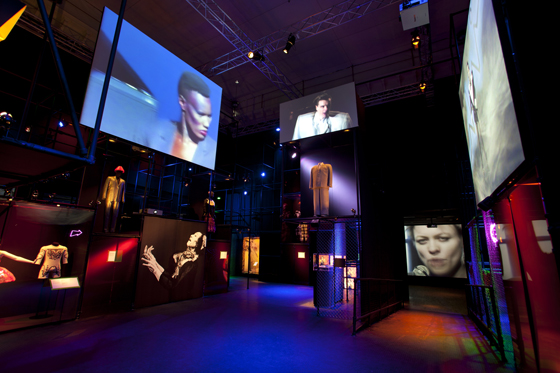
Grace Jones and Laurie Anderson are two of the performers who appear in the show's rich audio-visual installation; © V&A images
×There was a time when it was hard to imagine that postmodernism as a phenomenon would ever come to an end. With its rejection of modernism, or, rather, of the depoliticised and well-nigh ubiquitous International Style that had come to dominate the design landscape of the 20th century, postmodernism displaced rational formalism and anti-style (itself a modernist fiction) with its enthusiastic, fast-and-loose citation of different historical styles, which could be mixed and matched, well, however you fancied. It was as if we'd reached a point where we were on an endless sampling trip. Before: Dieter Rams's formally reduced, monochromatic '606' shelving system. After: the highly expressive and ornamented, totemic 'Carlton' bookcase of Ettore Sottsass. Before: Mies van der Rohe's resolutely rectilinear Seagram Building in New York. After: Terry Farrell's temple-like, ziggurat-heavy Secret Intelligence Service offices in London. Before: Le Corbusier's box-like 'LC2' club chair. After: Alessandro Mendini's Louis-XV-meets-Pointillism 'Proust' armchair.
The work of provocative design studios and collectives, such as Memphis and Studio Alchimia, are presented as examples of postmodernism's object-based expression; © V&A images
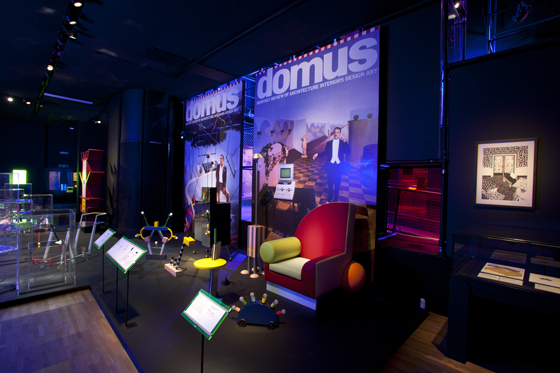
The work of provocative design studios and collectives, such as Memphis and Studio Alchimia, are presented as examples of postmodernism's object-based expression; © V&A images
×It was a time of parody and irony, where you'd be forgiven for thinking that architects and designers' tongues were constantly in their cheeks and their eyes perpetually winking, as the dressing-up box of visual discourses of both high and low culture was raided again and again for provocative, and sometimes subversive, effect. French philosopher and theorist Jean-François Lyotard identified 'bricolage' as a key characteristic of postmodernism, describing it as 'the multiple quotation of elements taken from earlier styles or periods, classical and modern; disregard for the environment; and so on', something which London-based architects Carmody Groarke have keenly reflected in their dynamic, and at times antagonistic, exhibition design.
The V&A chooses to treat the subject by dividing the exhibition into three broadly chronological sections, each dealing with a key aspect of postmodernism. So we start with a gallery that focuses for the most part on architecture, arguably the discipline within which postmodernism first presented itself. The show-stopping centrepiece here is a full-scale reconstruction of Hans Hollein's façade from the 1980 Venice Biennale. Represented alongside the projects of further postmodern architects, such as James Stirling and Aldo Rossi, are designers Ron Arad and Vivienne Westwood, whose early work displays an emphatically citational, bricolage-like character.
'Grace Jones Maternity Dress' by Jean-Paul Goude, 1979; © Jean-Paul Goude
Carmody Groarke's design for the second gallery, which examines postmodernism in the context of 1980s design, art, music, fashion, performance and club culture, offers a fittingly club-like space, heavy on audio-visual installation. Here, highly constructed performers, such as Leigh Bowery and Grace Jones, appear alongside the fashion photography of Guy Bourdin and Helmet Newton. The final section of the exhibition takes as its focus the hyper-consumption of the 1980s that is so often associated with the postmodern period. Brands such as Swatch, Chanel, Disney and, perhaps the ne plus ultra of commodity-culture actors, MTV all make an appearance here. It's dress for excess.
'Power, Corruption & Lies' album cover for New Order by Peter Saville; © Peter Saville
Forty years since postmodernism began to change our cultural landscape, Martin Roth, the recently appointed director of the V&A, sees the new show as an opportunity for reflection and reacquaintance (if you're of a certain age) or discovery (if you're belong to 'the younger generation', as he puts it). Whatever your personal investment in and memory of postmodernism's heyday, the exhibition succeeds in reminding us of the movement's heterogeneous nature, irreducible to any single aspect or value. (Indeed, its plurality, which it celebrated in the form of a merry-go-round of cultural borrowings, was fundamental to its workings.) But it also reminds us how postmodernism's frequently excessive stylistic posturings – a conscious challenge to the notion of 'good taste' so closely associated with modernism – demonstrated quite neatly the fact that taste is always socially constructed. There's nothing natural about it. So no need to feel guilty about that Mondrian-style Swatch.
The exhibition features a full-scale reconstruction of Hans Hollein's architectural façade from the 1980 Venice Biennale; © V&A images
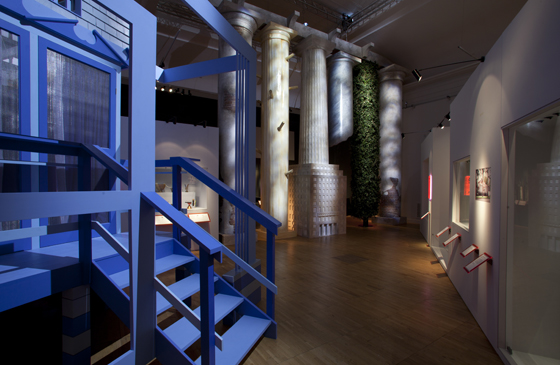
The exhibition features a full-scale reconstruction of Hans Hollein's architectural façade from the 1980 Venice Biennale; © V&A images
×....
Postmodernism: Style and Subversion 1970–1990
curated by Glenn Adamson and Jane Pavitt
24 September 2011 to 15 January 2012
Open daily 10.00 to 17.45 and until 22.00 every Friday
Tickets: £11 (concessions available)
Free entry for V&A Members
....



